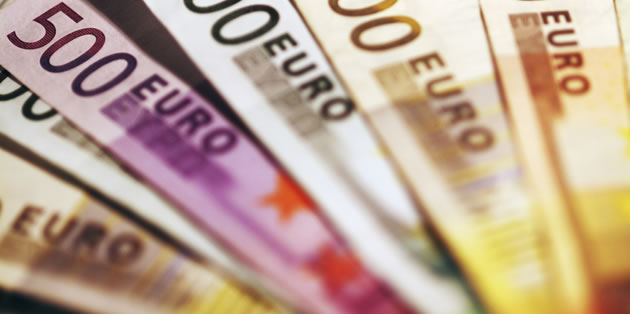EUR/AUD Conversion Rate Predicted to Edge Lower after Eurozone Money Supply Growth Misses Estimates
The Euro to Australian Dollar (EUR/AUD) exchange rate advanced by around 0.3% on Tuesday afternoon.
Now that the European Central Bank (ECB) President Mario Draghi has been transparent with regards to policymakers’ wishes to ease policy, demand for the common currency has dampened considerably. Draghi suggested that not only will they review the asset purchase program to see if an extension to quantitative easing is appropriate, but also look to cut the benchmark interest rate further if necessary. Although the single currency dived in response to these words, the depreciation has been somewhat slowed by US Dollar weakness amid speculation that a run of poor domestic data results will cause the Federal Open Market Committee (FOMC) to delay a rate hike.
On Tuesday morning the common currency extended losses after domestic data failed to have a positive impact. September’s Eurozone seasonally-adjusted M3 came in at 4.9% on the year despite predictions that money supply in the region would show 5.0% growth. With an absence of further domestic data to provoke changes, the single currency will be subject to changes in response to market volatility. In particular, US Dollar movement will impact on the shared currency thanks to negative EUR/USD correlation.
The Euro to Australian Dollar (EUR/AUD) exchange rate is currently trending in the region of 1.1.5303.
AUD/EUR Exchange Rate Forecast to Tick Higher after Rising Weekly Australian Consumer Confidence
The commodity-correlated Australian Dollar has seen substantial gains of late in response to news that the People’s Bank of China (PBoC) cut the overnight cash rate. This led many to predict that commodity values will rise thanks to greater demand from the world’s second-largest economy. China’s stock prices have also shown robust gains of late with the Shanghai Composite Index extending beyond a two-month high as defence shares rally. This could be considered fortunate timing for Australia now that trade conditions with China have been relaxed, and with the Trans-Pacific Partnership deal likely to aid Australian export growth considerably.
Also aiding the ‘Aussie’ (AUD) appreciation during Tuesday’s European session was data out of China. Whilst September’s Chinese Industrial Profits came in at -0.1% on the year; the contraction is much smaller than that of the previous month’s -8.8% loss in profits. Analysts from the National Bureau of Statistics were less optimistic about China’s Industrial Profits, however, stating; ‘Even though the rate of industrial losses narrowed in September, given that downward pressure on the industrial economy continues, the industrial profit outlook is still not optimistic.’
The Euro to Australian Dollar (EUR/AUD) exchange rate dropped to a low of 1.5215 today.
Euro to Australian Dollar (EUR/AUD) Exchange Rate Predicted to Trend Narrowly ahead of US Durable Goods Orders
With both the Euro and the Australian Dollar sensitive to US Dollar movement, US Durable Goods Orders data is likely to provoke changes for the EUR/AUD exchange rate. US Consumer Confidence data is also likely to have a significant impact on the pairing. Should the North-American data provide positive results, both the single currency and the ‘Aussie’ will dive versus their major competitors.
Wednesday will be very significant for those invested in the Euro to Australian Dollar (EUR/AUD) exchange rate. During the Australasian session, China’s Leading Index and Australia’s Consumer Price Index data will be likely to provoke marked ‘Aussie’ movement. The German Consumer Confidence survey will see single currency movement during the European session. However, trade may be somewhat subdued on Wednesday ahead of the North-American session and the Federal Open Market Committee (FOMC) interest rate decision.
The Euro to Australian Dollar (EUR/AUD) exchange rate climbed to a high of 1.5314 during Tuesday’s European session.



